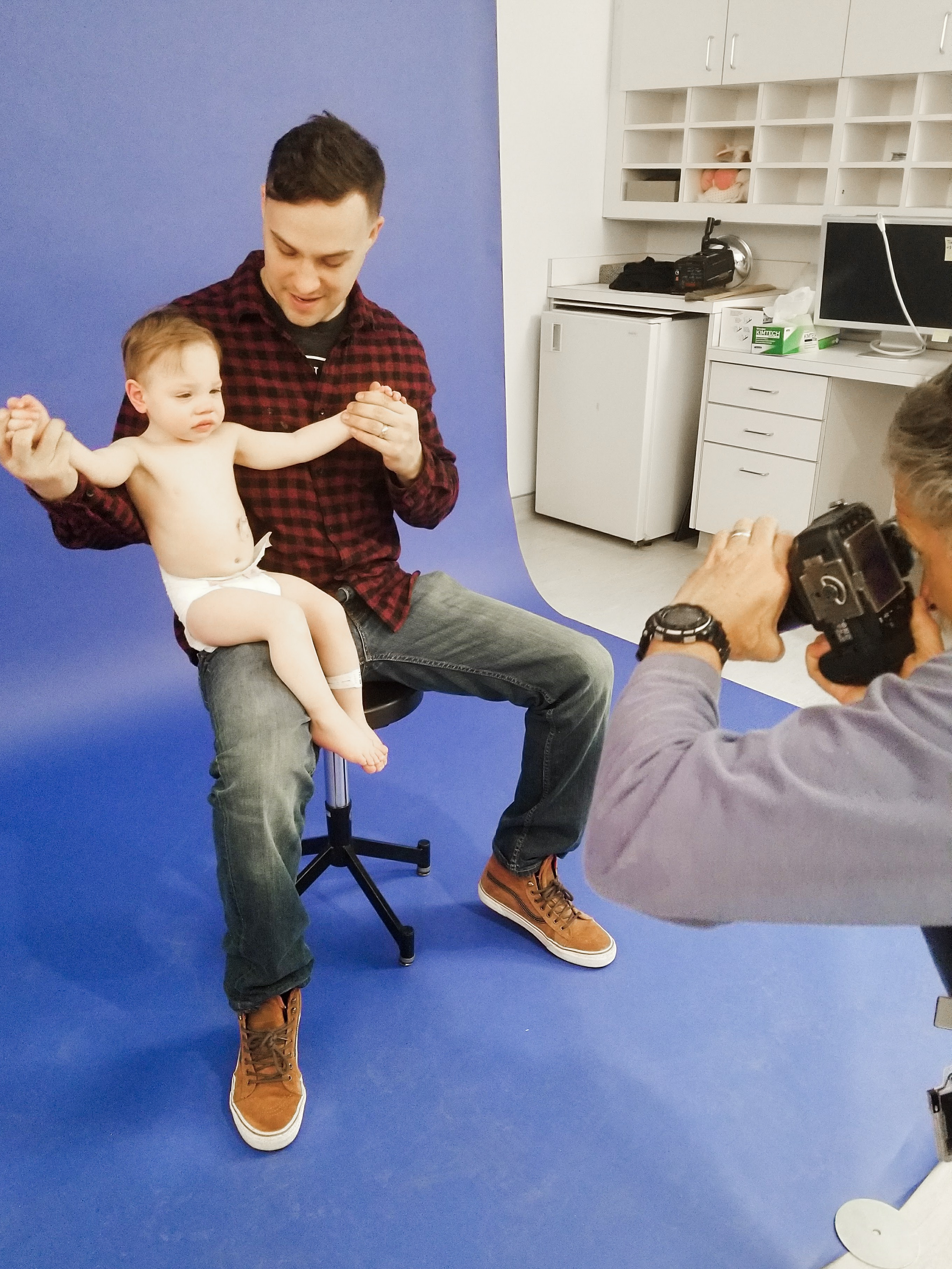People ask me questions about Mathias’ feeding issues daily. Mathias’ feeding issues are complex, so I’ll try to answer the most frequently asked questions in this blog post.
What’s a “Tubie?”
A Tubie is anyone who has a feeding tube, no matter what kind!
How does Mathias’ tube work?
This is actually a question that people DON’T often ask me because they are often afraid of asking. I’ll be the first to admit it: I had NO experience with a feeding tube prior to Mathias, and my first exposure to a “permanent” feeding tube was only 1 year before Mathias was born. So many of us are blessed to not ever worry about these kinds of things, so when we’re exposed to them we don’t even know what to think. There are a few different kinds of feeding tubes with various abbreviations, but the purpose of a feeding tube is universal: to deliver nutrition to someone who can’t eat or drink enough on their own. Mathias has a gastrointestinal tube or g-tube, which is a very small device that’s inserted into the stomach through the abdomen and sits above-left of the belly button. It delivers food directly to the stomach. Mathias’ g-tube is a mini-one button and sits pretty flat against his stomach. The g-tube itself is actually a little balloon that inflates with water and drips food into his stomach. When Mathias needs to be fed he gets connected to a feeding pump (it’s a blue Infinity One pump) and the pump regulates the length + dose of his feed. When Mathias first got the tube we had to run the pump very slowly – I think it was around 2.5 ounces per hour. Livia can drink that much in less than 5 minutes, but Mathias’ reflux was so bad that he projectile vomited if we ran it faster than that. When I started writing this post eight months ago, his feed ran at 215 ML an hour (7 oz) and 165 ML at a time (5.5 oz), and he was connected to the feeding tube for about 45 minutes at a time, 3 times a day plus a longer overnight feed. His overnight feed was about 3 and a half hours long. Nowadays, since we switched from Elecare Jr. (formula) to Nourish (a real food blend) for his “food,” his pump runs at 300 ML an hour and 200 ML at a time – only 30 minutes! Plus, his overnight feed is about an hour and a half long. It’s nice when things change!

Why does Mathias have a feeding tube?
Mathias has had feeding problems from day one, which all stem from his genetic disorder. Most babies born with Smith Lemli Opitz Syndrome do not have a hunger drive and it does not develop until anywhere from 12 months of age to 3 years old. Mathias’ developed around 18 months – nowhere close to the beginning of his life.
People love to say that your baby won’t starve themselves, but in my case this was not true in the slightest. We literally started weigh-ins only days after he was born (when they discharged us from the hospital my nurse told me that feeding issues were “normal” and that he’d “get the hang of it” and until then to pump and bottle feed. He was born on a Tuesday and on that Sunday my mom paid a lactation consultant to come look at Mathias and try to figure out what the issue was with nursing. We syringe fed him for days hoping to not cause any bottle confusion. I tried using a nipple shield to help him latch and slow my let-down, which the consultant said could have been part of the issue. She told us to go to a chiropractor to help fix his wonky head and his neck, which was stuck on one side, saying that often nursing problems go away after those issues were solved. The chiropractor did help his neck, but did nothing to help change my child’s eating patterns, who despite what everyone told me, did not seem to be hungry.

Mathias was born around the fiftieth percentile, at 7 lbs and 13 oz, three days past his due date. By one month of age he had dropped to the fifteenth percentile, and slowly worked his way down the growth curve to the 7th, then 5th, then 2nd percentile. It wasn’t until he hit the 0th percentile at six months old, and had not gained weight in one month, that his gastroenterologist decided to hospitalize him to try to figure out the problem.
When I look back on it, I’m amazed that it took so long to figure it out, despite my pushing. The first gastroenterologist we saw wouldn’t prescribe any reflux medication because he didn’t “think it did much” and told me that the reason Mathias had weight gain issues was because he had a milk protein intolerance. And the latter was true – he did have a milk and soy intolerance, until he hit 24 months – but that wasn’t the reason my child needed to be force fed every two hours for six months, and would only eat eighteen ounces a day, on a good day. I logged every half ounce and ounce he ate. Some days he would literally only drink 12 ounces a day. Upon my insistance, my pediatrician gave me another referral and we switched to a gastroenterologist at Massachusetts General Hospital when Mathias was four months old. Thank God we did because he’s the one who made the connection that Mathias’ head circumference had been at the 1st percentile since birth, and that he should see a neurologist to determine if there was a genetic component to why he wasn’t eating, after we had tried reflux medication, switching from breast milk to formula, different feeding schedules and different bottles.
Unfortunately, when Mathias was hospitalized for the second time at seven months, after our initial plans to get him to gain weight fell through, he was old enough to be traumatized by being force fed. He remembered pain and recognized where it came from. So while the experiment of placing a nasal gastric tube proved that he could gain weight if fed the appropriate amount, it also was the last time that my son drank milk from a bottle.
He has not drank any fluids besides water or very watered down juice since the week of February 28th, 2017.
Long story short: Mathias needed a feeding tube because he didn’t recognize hunger for the first year and a half of his life, and now, recognizing that he is hungry, is too sensory sensitive to consume much food. So many textures bother him and too many tastes offend him, and we can’t force him to eat anything. Contrary to what I believed growing up watching my parents raise six other children, you can’t force feed your children.
Up until July 2018, Mathias refluxed at least three times per week during his overnight feed. And that’s just the times he would throw up at night – that doesn’t include all of the times that his reflux rose up in his throat, burned and made him not want to touch any food.
Up until August 2018, Mathias couldn’t even swallow the solids he wanted to eat, because his tongue wouldn’t move in a circular motion to push food back to his throat.
Presently – Mathias can chew very crunchy, dissolvable solids. He will swallow purees, but only a few flavors. We have made progress with some soft solids (cake textures), but had regression.

How long will he need the feeding tube?
This is the question I am asked on a regular basis, and the question I have no answer to. He may need it for the rest of his life – most people with Smith Lemli Opitz syndrome do. Mathias is on the mild end of the spectrum but that doesn’t really give us a clear answer to anything. The doctors at the National Institute of Health told me they think that he will get off of the feeding tube eventually, but it’s really on Mathias’ terms. I would be happy if he is no longer tube fed by age 5 – we’ll see.
Right now, Mathias probably eats between 150-250 calories by mouth per day, but they’re “empty” calories, meaning they don’t provide nutrition. Applesauce and goldfish may be any toddler’s ideal diet, but until he’s eating something substantial on a regular basis, Mathias’ feeding team won’t let me subtract any calories. Since he’s on a real food blend, he gets less fat in his diet, meaning he really needs all of the calories he puts into his body.
I don’t know how long Mathias will need his tube. Maybe he’ll always have it and only need it sometimes. Maybe it’ll be gone in a few years. I can’t know, and all I can do is keep helping Mathias by offering him food every day and working with his therapists to overcome the obstacles in his way.



